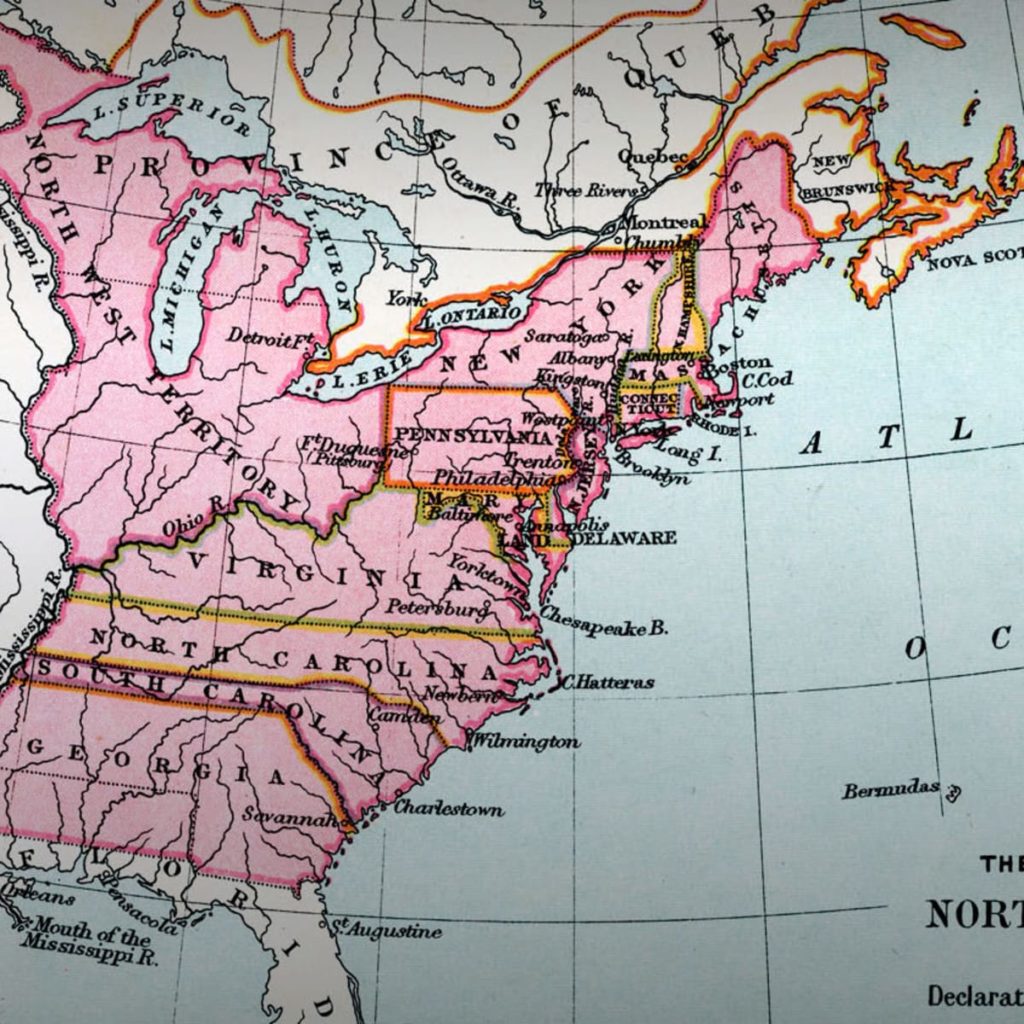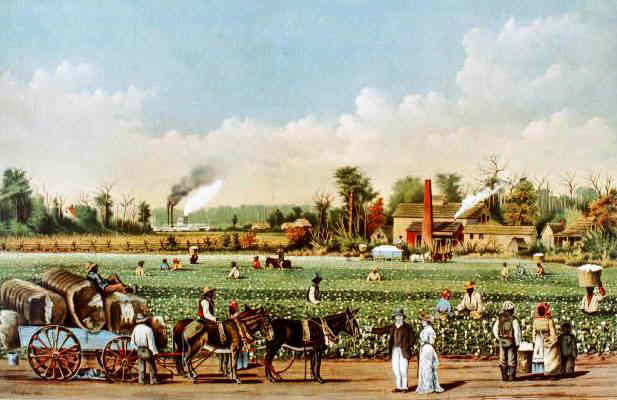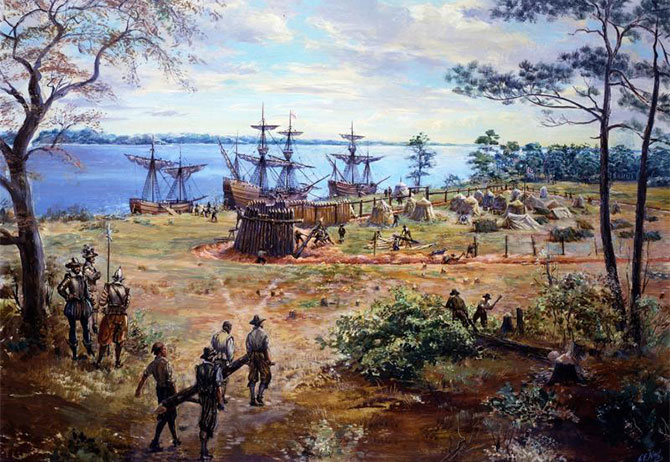Last updated on March 8th, 2023 at 06:16 am
The thirteen colonies, also known as Colonial America, were established during the 17th and 18th centuries. Under British rule, the colonies were located along the eastern coast of the modern-day United States. Over time, the colonies grew and flourished as they began stretching across the rest of the Atlantic coast.
When the American Revolution came around in 1775-81, 13 colonies had been established. Eventually, these 13 colonies would develop into 13 states with more provinces stretching out into the country’s western reaches. Still, what was Colonial America like before they declared independence?

What was life in Colonial America like for the average person and those in a higher social position? We’ll explore the colonists’ lives throughout the rest of this post.
What Were The Average Living Conditions in Colonial America Like?
Those moving to the American Colonies were promised a fresh start, free of religious persecution and brimming with new economic opportunities.
Still, while many colonists were leaving behind England in hopes of a better life, Colonial America was filled with its challenges and difficulties. Many people moving to the colonies would live short and difficult lives.
Europe viewed the colonies as a new source of power, resources, and hope for their growing populations. But Colonial America was essentially wild and untamed.
Towns and cities had to be built, organized and governed from the ground up. Goods and resources to build the colonies, and keep them well-provisioned, also had to be shipped in from England and other parts of Europe.
In addition, Native American attacks were not uncommon in the early days of the colonies, as the new settlers had displaced some of the tribes that had lived on the land for centuries.
Colonists were also in danger from thieves, enslaved people that rebelled, and even people within their towns that wanted to harm them.
The people of the colonies worked hard and tried to make the best of their situation. But living in the colonies wasn’t easy unless you were of the upper class.

The upper class had more resources, protection, and land than the average colonist. They also had servants and enslaved people to do all the manual work. So they worked less and accumulated wealth more efficiently.
On the other hand, lower-class colonists had to work hard from dusk to dawn to survive and make a living for their families. They lived off the land and often struggled to grow enough food to eat and sell.
Even as the colonies developed and began to thrive, there was still much uncertainty surrounding an American colonist’s day-to-day life.
Along with the attacks from native people, colonists at the time were highly religious. Many believed that their lives were in danger from supernatural threats. Colonists used the devil as a scapegoat for natural disasters, disease, food shortages, and other issues that cropped up.
Natural hazards such as poisonous plants, vicious animals, and even simple home-related threats shortened the colonists’ life span. For instance, cooking a meal could be dangerous as hot pans and pots could catch fire. Candle-lit homes also posed a major threat and could burn entire homes and towns.
How Did Social Class Impact The Lives of The American Colonists?
Despite the harshness of life in Colonial America, many people were not deterred from moving to the colonies. Though some people were forced to move across the ocean, this included prisoners, orphans, and the persecuted protestants, many people genuinely thought they would be better off in the New World.
England had a very strict social hierarchy in place. Most people couldn’t move social classes and were stuck in the circumstances they were born into.
In the colonies, life was a lot different. People were more relaxed about social class and had a chance to turn their life around. Servants and even enslaved people had the ability to move upward socially and could even become land owners if they survived the tribulations of colony life.
So, while there were many hardships living in the colonies, there was also the promise of a brand new life. A growing middle class was forming too. This included land owners, business owners, and artisans.
One’s social class didn’t matter as much as wealth did in the American Colonies. Men who were able to make a profit from their farm or start a business could move from the lower class to the middle class or even the upper class.
Women could also marry above their station to gain social standing. If you had the brains and proper resources, you could be successful even without a good family background.
As a result, tens of thousands of people came to the colonies in the mid-17th century. Even more, people wanted to move to the New World as they were swept away by tales of the American dream. So the first colony was settled in 1607 in Jamestown. The Plymouth Colony followed this, then the Massachusetts Bay Colony.

More colonies were being established, and by 1763 almost the entirety of the eastern coast was settled by the British. The colonies were divided into three areas.
You had the New England Colonies, the Middle Colonies, and the Southern Colonies. Daily life in each of these regions was slightly different. There were differing climates, soil conditions, and varying forms of danger that threatened the colonists’ lives.
But the basic religious beliefs and attitudes of the colonists were uniform, and most colonists’ lifestyles could be considered similar unless they were of the upper class. We’ll talk more about the day-to-day lives of the colonists in the final two sections of this post.
What Was Life In The Colonial Countryside Like?
The economy of the colonies was based primarily on farming and commerce. Colonists also created handcrafted goods that they sold and traded within their local communities and along the eastern coast. However, 9 out of 10 people were farmers in the American Colonies.
Colonists tended to work on their small family farms. These farms were self-sustaining and provided everything families needed to survive. In other words, what the average colonist ate, drank, and wore all came from their farms.
For people to create farms, they had to clear trees with very basic tools such as axes and saws. Those of the lower class had no help building their homes. Instead, they cut down timber and built everything themselves.

Typically, houses in the Colonial American countryside were one room and fully open. Families had no privacy amongst each other.
The beds, kitchen, and fireplace were all in a single room. And a fire was the only source of heat and the only way to cook food. So, plenty of firewood and timber had to be collected throughout the day. Families got up during sunrise and worked till sunset to keep up with all this work.
They tended to crops, fed animals, cut wood, made clothes, and assembled many home goods by hand. These home goods included things like soap, candles, and furniture.
Life on the colonial farms was simple, hard, but consistent. Furthermore, religion was a bedrock of colonial life in the countryside. Sunday morning church services were held weekly and could last up to five hours.
What Was Life In Colonial Cities Like?
In the cities, life was a little different. Again, most people lived out in the countryside on farms. But by 1750, around 1 in 20 colonists lived in the city.
Life was a little more exciting and diverse. Colonial cities were a melting pot of cultures and ideas, especially port cities that had many imported goods and workers.
Cities were where all the trading took place. Ships would sail into the ports and bring luxury items and supplies. This included things like books, carpets, jewelry, paintings, and other exciting goods.
News from England and Europe also came in through the cities. Life was more lively in the cities as you had more market places, taverns, and shops.

You could find plenty of markets by the docks that sold basic things like milk, bread, dairy, and meat. Drinks were sold at the local taverns and were a gathering place for the locals to gossip and have fun.
In addition, there were all kinds of novelty shops for people to enter. Finally, you had blacksmiths, clockmakers, tailors, and barbers who owned stores.
Unlike in the countryside, people could buy many things they needed for their home and even have their clothes handmade. However, these luxuries were reserved for people who were better off. Again, though, there was a growing middle class of artisans and landowners who had started off poor but grew their wealth.
Overall, the cities of the colonies were exciting, but they weren’t perfect. People lived in cramped homes that were placed close together. Sanitation was not a priority, and rotting garbage and the open sewer system made the city smell.
There was also a large population of poor people in cities. Still, there was more of a variety in terms of jobs. People in the countryside were largely farmers. Colonists in the city could learn trades, start businesses, and even work at the docks.

